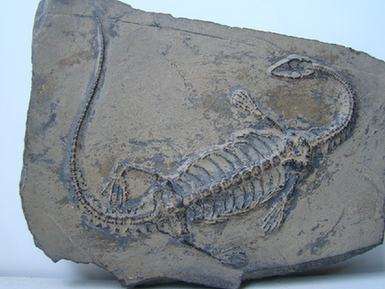In these very old rocks, paleontologists have found something that looked familiar.
在這些古老的巖石中,古生物學者發現了一些熟悉的東西。
Certain communities of microbes can form layered, rock-like mounds called stromatolites.
某些菌落可以形成一層一層,巖石狀的土丘,被叫做疊層石。
Stromatolites grow in shallow bodies of water in many places around the world.
世界上有很多地方的淺水區都存在著疊層石。

In the 1980′s paleontologists found the remains of ancient stromatolites in 3.5 billion year old sedimentary rocks.
在20世紀80年代的時候,古生物學家在35億年的沉積巖里發現了古疊層石的遺骸。
Besides stromatolites, possible microscopic fossils have been found in rocks up to 3.5 billion years old.
除了疊層石外,其他目前在巖石中已經找到的可能的微觀化石已經有長達35億年的歷史了。
While the origin of these tiny structures is still intensely debated, many scientists are convinced that they are the remains of microorganisms.
雖然關于這些微小結構的起源還存在著嚴重的分歧,但很多科學家已經確認,他們是微生物的殘骸。
It appears that by at least 3.5 billion years ago, the oceans were teeming with life, and that the land was also colonized by microbes very early in Earth's history.
似乎在地球演變的早期過程中,至少在35億年以前,海洋里存在著大量生體命,而陸地是微生物的主要棲息地。
譯文為可可英語翻譯,未經授權請勿轉載!











